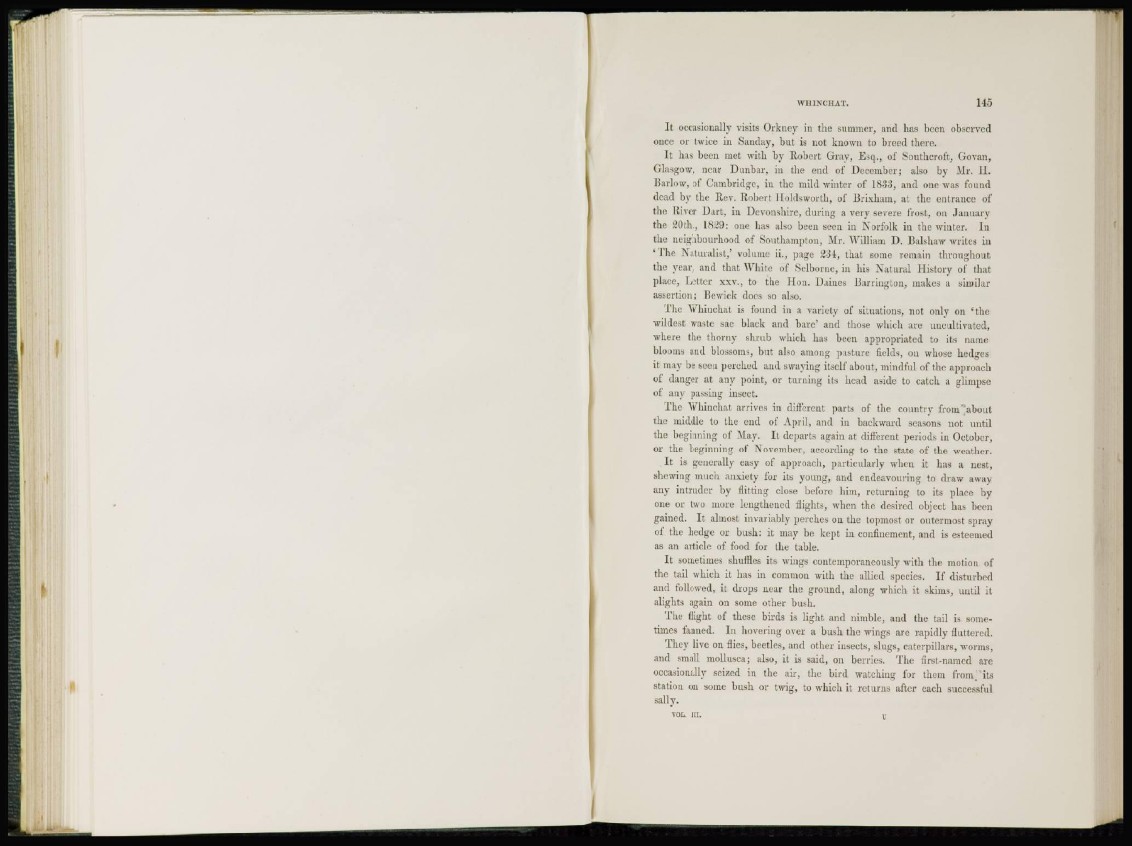
I t occasionally visits Orkney in the summer, and has been observed
once or twice in Sunday, but is not known to breed there.
It has been met with by Robert Gray, Esq., of Southcroft, Goran,
Glasgow, near Dunbar, in the end of December; also by Mr. II.
Barlow, of Cambridge, in the mild winter of 1833, and one was found
dead by the Rev. Robert Holdsworth, of Brixham, at the entrance of
the River Dart, in Devonshire, during a very severe frost, on January
the £0th., 18&9: one has also been seen in Norfolk in the winter. In
the neighbourhood of Southampton, Mr. William D. Balshaw writes in
' T h e Naturalist,' volume ii., page 234, that some remain throughout
the year, and that White of Selborue, in his Natural History of that
place, Letter xxv., to the Hon. Dailies Barring ton, makes a similar
assertion; Bewick does so also.
The Whiuchat is found in a variety of situations, not only on 'the
wildest waste sac black and bare' and those which are uncultivated,
where the thorny shrub which has been appropriated to its name
blooms and blossoms, but also among pasture fields, on whose hedges
it may be seen perched and swaying itself about, mindful of the approach
of danger at any point, or turning its head aside to catch a glimpse
of any passing insect.
The Whiuchat arrives in different parts of the country from "'about
the middle to the end of April, and iu backward seasons not until
the beginning of May. It departs again at different periods in October,
or the beginning of November, according to the state of the weather.
I t is generally easy of approach, particularly wdieu it has a nest,
shewing much anxiety for its young, and endeavouring to draw away
any intruder by flitting close before him, returning to its place by
one or two more lengthened flights, when the desired object has been
gained. It almost invariably perches on the topmost or outermost spray
of the hedge or bush: it may be kept in confinement, and is esteemed
as an article of food for the table.
I t sometimes shuffles its wings contemporaneously with the motion of
the tail which it has in common with the allied species. If disturbed
and followed, it drops near the ground, along which it skims, until it
alights again on some other bush.
The flight of these birds is light and nimble, aud the tail is sometimes
fanned. In hovering over a bush the wings are rapidly fluttered.
They live on flies, beetles, and other insects, slugs, caterpillars, worms,
and small nioUusca; also, it is said, on berries. The first-named are
occasionally seized in the air, the bird watching for them from its
station on some bush or twig, to which it returns after each successful
sally.
VOL. III. u